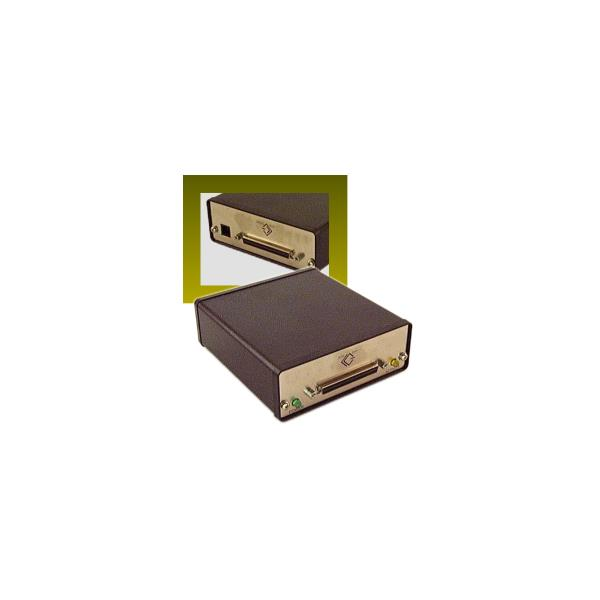Description
 <---> <---> |
The ACC7229 allows you to add Ultra 320 devices to an existing High Voltage Differential (HVD) system, or utilize existing HVD devices in an Ultra 320 or single-ended system. All this is accomplished without any impact on SCSI protocol or loss of data thruput. |
Using Ultra 320 Devices in an Existing HVD System: SCSI protocol allows all SCSI implementations (LVD/SE and HVD) to communicate in the same SCSI domain. This is accomplished through the use of the DIFFSENSE signal. However, the slower devices on either segment can reduce the performance level of the bus. This huge penalty is avoided by using a type of SCSI Expander usually referred to as a Converter. As an example, a SCSI converter is placed between an Ultra 320 device and an HVD device. This isolates the different versions of SCSI into two segments allowing both the Ultra 320 devices and the HVD devices to function at their full thruput. Using HVD Devices in an Ultra 320 System: HVD Devices can be added to an Ultra 320 or Single-ended system simply by adding an Ultra 320 to HVD Converter, attaching the HVD SCSI segment to the HVD port of the Converter. The converter will not require a SCSI ID, and the system will operate with no compromise of thruput. Mixing SCSI Device Types: Multimode LVD SCSI will automatically change to Single-Ended (SE) if a SE device is on the same bus segment. However, neither LVD nor SE SCSI can directly communicate with HVD SCSI. The ACC7229 enables this type of communication by converting the Ultra320 or SE SCSI to HVD or vice versa. The presence of a SCSI Converter will not decrease data thruput The ACC7229 may be used in any application with an LVD, SE or HVD host adapter. They should be used if the host adapter is an Ultra320 LVD host adapter with Ultra320 drives connected to it. The ACC7229 LVD/MSE to HVD SCSI Converters are completely compatible with all devices that conform to the full ANSI X3T10 standard through SPI-4 (Ultra320). Isolation for Hot Swapping: The logical isolation between the two sides of a SCSI Converter allows a device on one side to be disconnected without disturbing the other side.
| Environmental | ||
| Relative Humidity: | 0 – 95% non – condensing | |
| Operating Temperature: | 0 – 50 deg. Celsius | |
| Storage Temperature: | -25 to 75 deg. Celsius | |
| Power Requirements | ||
| Voltage: | 100-260 VAC, auto select | |
| Frequency | 50 – 60 Hz | |
| Safety Approvals | ||
| UL, CSA, TUV, CE | ||
| EMI/RFI | ||
| FCC Class A, CE | ||
| SCSI Connections | ||
| Two SCSI-3 68 pin DH style connectors | ||
| Communication | ||
| All devices will function to their full designed capabilities. | ||
| Warranty | ||
| Two year limited warranty | ||
| Physical Size | ||
| Height: | 1.6 inch (41 mm) | |
| Width: | 4.1 inch (104 mm) | |
| Depth: | 4.5 inch (114 mm) | |
For technical information on SCSI, click here.






